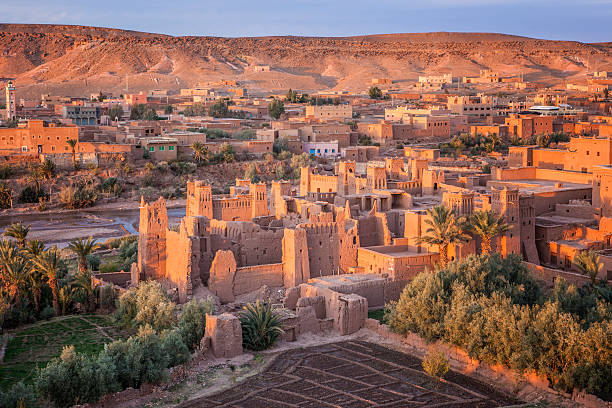KASBAH AIT BEN HADDOU, a historic ighrem or ksar (fortified village) in Morocco, once flourished as a vital caravan route connecting the Sahara and Marrakech. Renowned for its exemplary Moroccan earthen clay architecture. This UNESCO World Heritage Site since 1987 showcases the region’s rich cultural heritage. Although over 90 families resided within the Kasbah in the 1940s, only five families remain today.
Ksar Aït Ben haddou Technical Information
- Architects: Unknown
- Location: Ouarzazate Province, Morocco
- Topics: Desert Architecture, Clay, Unesco Heritage
- Type: Urban Planing
- Area: 3.03 ha
- Year: 11th Century
- Reconstruction: 17th Century
The site of the ksar has been fortified since the 11th century during the Almoravid period. None of the current buildings are believed to date from before the 17th century. The site’s strategic importance, was due to its location in the Ounila Valley along with one of the main trans-Saharan trade routes. The Tizi n’Tichka pass, which reached via this route, was one of the few routes across the Atlas Mountains. Crossing between Marrakech and the Draa Valley on the edge of the Sahara. Other kasbahs and ksour were located all along this route. Such as the nearby Tamdakht to the north.
Today, the ksar itself is only sparsely inhabited by several families. The depopulation over time is a result of the valley’s loss of strategic importance in the 20th century. Most local inhabitants now live in modern dwellings in the village on the other side of the river. Make a living of agriculture and especially of the tourist trade.
The village’s buildings are grouped together within a defensive wall that includes corner towers and a gate. They include dwellings of various sizes ranging from modest houses to tall structures with towers. The village also has a number of public or community buildings such as a mosque, a caravanserai, a kasbah (castle-like fortification) and the Marabout of Sidi Ali or Amer. At the top of the hill, overlooking the ksar, are the remains of a large fortified granary (Agadir). There is also a public square, a Muslim cemetery, and a Jewish cemetery.
The structures of Ait Ben Haddou and of other kasbahs and ksour throughout this region of Morocco typically employed a mixture of earth and straw, which was relatively permeable and easily eroded by rain over time. As a result, villages of this type can begin to crumble after only a few decades.
The Kasbah Ait Ben Haddou significantly restored in modern times. Thanks in part to its use as a Hollywood filming location and to its inscription on the UNESCO list of World Heritage Sites in 1987. UNESCO reports that the ksar has “preserved its architectural authenticity with regard to configuration and materials” by continuing to use traditional construction materials and techniques and by largely avoiding new concrete constructions. A local committee is in charge of monitoring and managing the site.

